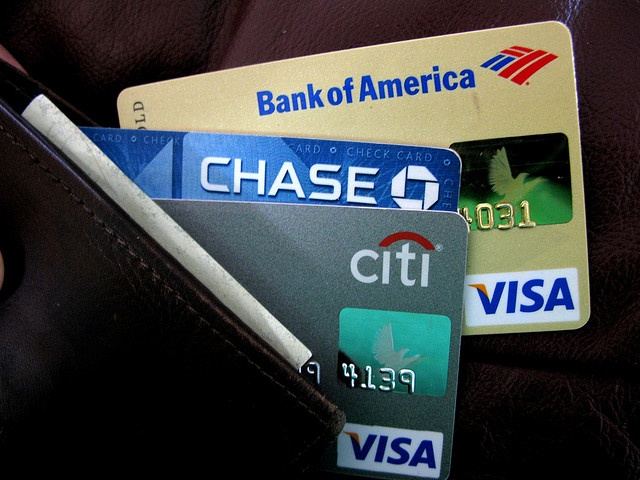Every month you get the statement in the mail and hesitate. Can I pay more this month? Or should I only pay the minimum balance? Too often we just opt to pay the minimum balance and promise ourselves we’ll make a bigger payment next month. But let’s say you have $15,000 in credit card debt. If you make only the minimum payment each month, you could end up paying an additional $11,000 in total interest. Not to mention, it will take you years to pay it off. So what do you do?
- Add It All Up
Collect all of your credit card statements for the month, and make a list. Include the following information in your list for each card:
- The name/type of card
- The current balance
- The interest rate
- The minimum payment
- The monthly due date
Find out how much total debt you have, and what your total monthly minimum payments are. Also note which credit card has the highest interest rate, and which has the highest balance.

- Ask Creditors For A Lower Rate
If you make your payments on time and you have a good credit score (730 or higher), it doesn’t hurt to give your creditor a call and ask for a lower interest rate. If you get one or two percentage points lower, it can end up saving you hundreds of dollars annually.
Also Read: Protect Yourself Against a Credit Card Data Breach
- Transfer Your Balance
Consider transferring your balances to a lower-rate credit card. While transferring a balance to a different card can be a smart move, it’s important to take a few factors into consideration first.
Only transfer the balance if you’re committed to paying off the debt within the introductory low-rate window, which typically expires 12-18 months after the first billing cycle. Often times the introductory rate is low, but the rate can skyrocket later. Avoid making any new purchases on your new card as sometimes the low-interest rate won’t apply to them. Keep in mind that you may also be charged a balance-transfer fee which is usually 3-4 percent of the total amount transferred.
- Create A Budget
Start by creating a Profit Plan to show you how much money you can expect to keep each month after your expenses are paid. Once your Profit Plan is complete, find out what the maximum amount of money is that you can pay towards credit card debt. Is it more than your total minimum monthly payments? If so, great! This means you can pay extra to your credit cards each month.
- Stash Your Cards
Start getting used to paying cash for all of your expenses moving forward, and stash your credit cards in a drawer at home. Don’t cancel the cards, just keep them in a place that isn’t easy to access. An ATBS Business Consultant can help you start saving for future expenses rather than charging them to your credit cards. When you get into the habit of paying cash for all of your expenses, you’ll become more mindful of how much you’re spending.
Also Read: Boost Your Credit Rating
- Pay Off One Card At A Time
Once you’re ready to tackle your debt, choose the card with the highest interest rate, and pay this one off first. Keep paying the minimum payment on your other cards, and apply all extra money to this one high rate card. Once that card is paid off, move to the next highest interest rate. If you have cards with the same interest rate, choose the card with the highest balance first.
A structured, disciplined approach to reducing debt can help you pay off your credit cards whether your balance is $3,000 or $30,000. Working on your Profit Plan and reviewing your P&L Statements will keep you on track, and before you know it, you’ll be on the road to a debt free life.
This article was originally featured on
ATBSshow.com.
Image Source - https://www.flickr.com/photos/armydre2008/